AGAVE
Agave
L., Sp. Pl. 323. 1753; Gen. Pl. 5: 6. 1754; Parker, For. Fl. Punj. ed. 2: 511. 1918 (Reprint 1973); Gentry, Agaves of Continental North America, Univ. of Arizona 670. 1982; Fl. China @ eFloras.org 24: 270; Reveal & Hodgson, Fl. North Amer. @ eFloras.org 26: 442; Akhtar & Ghazanfar, Fl. Pak. @ eFloras.org p. 2.
A large perennial rhizomatous herb, monocarpic, scapose. Stems above ground, very short or indistinct, unbranched, less often branched. Leaves evergreen in basal rosette, spirally crowded, large, stout, thick, leathery-fleshy or somewhat woody containing many fibres, linear-lanceolate to ovate, margin entire, filiferous or armed with marginal teeth and short to long, sharp-pointed apical spine. Scapes usually long and thick, much exceeding foliage, bearing erect flowers in large panicles. Inflorescences terminal on top of a semiwoody stalk, open to dense, bracteate, occasionally bulbiferous, with flowers borne singly, in pairs or in umbel-like clusters of 2-40+ on peduncles or the lateral branches borne by peduncle. Flowers protandrous, mostly erect, showy, perianth mostly yellow, funnelform to tubular. Tepals 6, connate basally into a tube with a constricted neck at the top; limb lobes erect or curved, subequal, linear to oblong or deltate. Stamens 6, exserted, attached atop or within perianth tube; filaments mostly filiform or slender; anthers linear, versatile. Ovary inferior, greenish at anthesis, succulent, thick-walled, 3-locular, ovules many per loculus in 2 rows; style subulate; stigma 3-lobed, capitate, papillate. Fruit capsular, oblong to ovoid, mostly thick-walled and fleshy, dehiscence loculicidal. Seeds black, flattened, obovoid, becoming globose distally.
287 species
Agave americana
Agave americana
L., Sp. Pl. 323. 1753; Parker, For. Fl. Punj. ed. 2: 513. 1918 (Reprint 1973); Fl. China @ eFloras.org 24: 271; Reveal & Hodgson, Fl. North Amer. @ eFloras.org 26: 452; Akhter & Ghazanfar, Fl. Pak. @ eFloras.org p. 6.
Plants acaulescent or short-stemmed herb, commonly suckering, suckers in rosette, occasionally caespitose, monocarpic, scapose. Stem above ground, very short, unbranched. Leaves 30-40 in a large massive basal rosette, evergreen, spirally crowded, narrowly or broadly lanceolate, rigid, fleshy, smooth, erect, spreading or curving outward, ends drooping, +/- 1 m long, 12-15 cm broad, widest about middle, neck not sharply constricted, green or glaucous, often with pale-yellow border, shallowly channelled only at apical region, apex recurved and tipped with a dark brown, conical or subulate spine, 1.5-4 cm long, margin straight, entire or wavy or with marginal spines, 5-10 mm long. Scape 3 (-5) m long with 30-40 terminal and lateral inflorescences in axils of bracts. Inflorescences paniculate, pedunculate, bearing lateral branches in axils of bracts; bracts persistent, triangular, 5-15 cm long with base up to 20 cm broad. Lateral branches 15-30 in number, horizontal to slightly ascending comprising distal 1/3-1/2 of inflorescence, longer than 10 cm, branched 1-more times, ultimate branches bearing flowers in pairs; all flowers of an inflorescence giving the false appearance of an umbel. Pedicels articulate, ca. 2 mm long. Flowers erect, 7-10 mm long, bisexual, protandrous. Hypanthium cylindrical, ca. 20 mm x 13 mm. Tepals 6, connate basally into funnelform to cylindric perianth, up to 4 cm long; tube ca. 1.2 cm long, lobes erect, subequal, 2.5-3 cm long, linear-lanceolate to deltate. Stamens 6, exserted; filaments attached at the top of perianth tube, erect, greenish yellow, slender, 4-4.5 cm long; anthers large, 11-16 mm long, linear, versatile, longitudinal dehiscence. Ovary inferior, ca. 13 mm x 9 mm, greenish at anthesis, succulent, thick-walled, neck constricted, 3-locular, ovules many per loculus in 2 rows; style slender, equal or slightly shorter than perianth; stigma capitate.
Capsule short-pedicellate, oblong, 3.5-8 cm, apex beaked. Seeds 6-8 mm. (Fruit not observed)
Inflorescence bears several bulblets after anthesis.
Common Names: Agave, Century Plant, American Aloe, Kamal Cactus; Gwarpatha (Hindi)
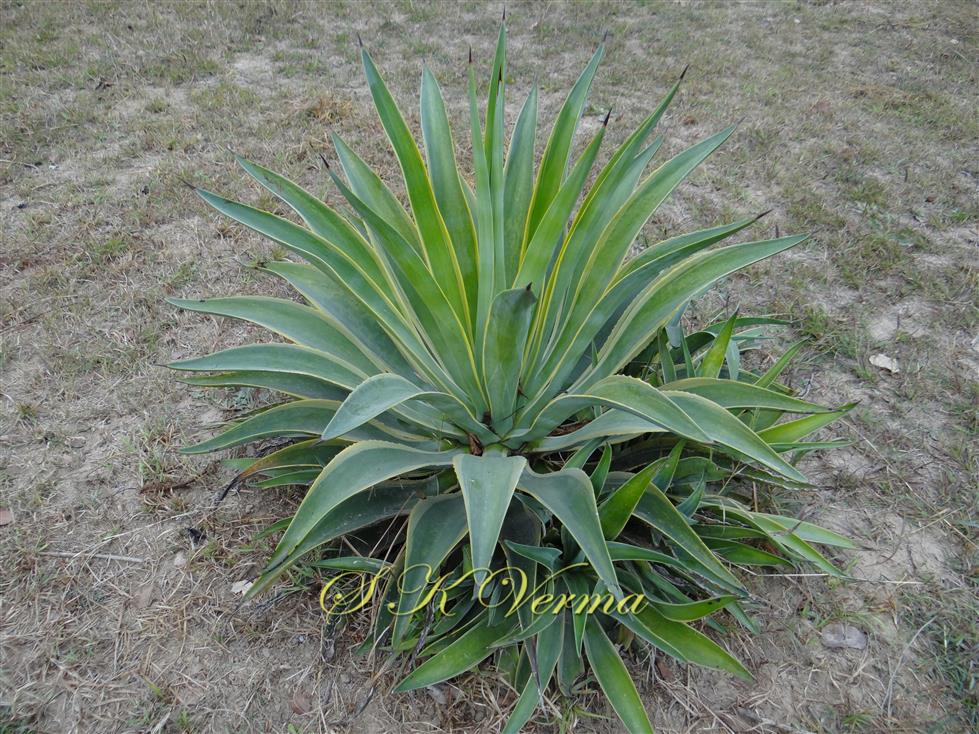
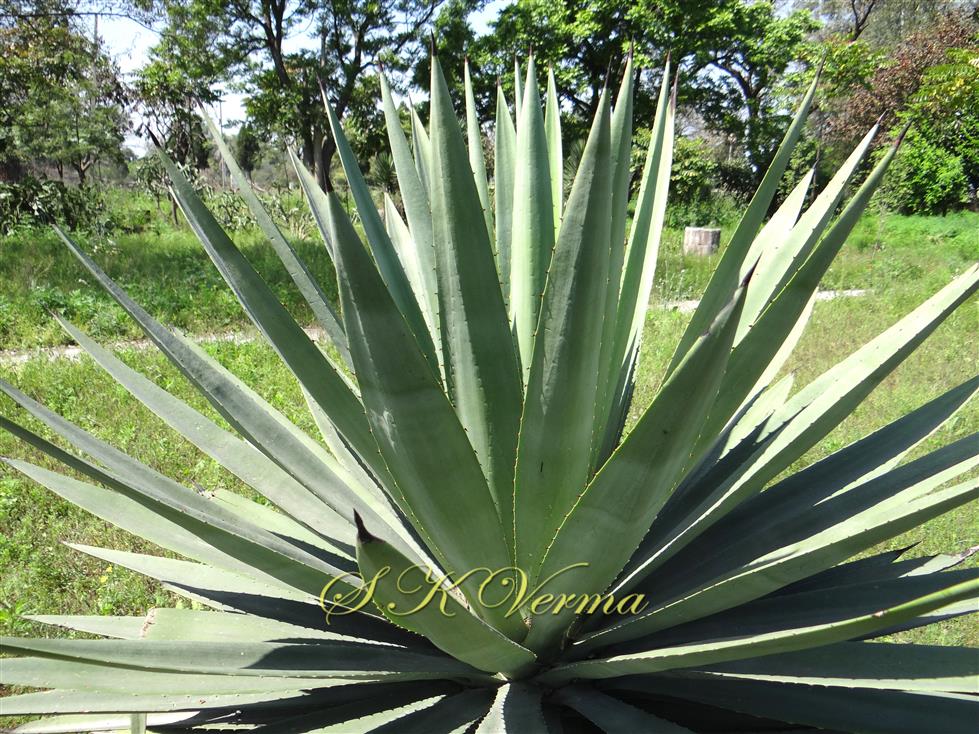

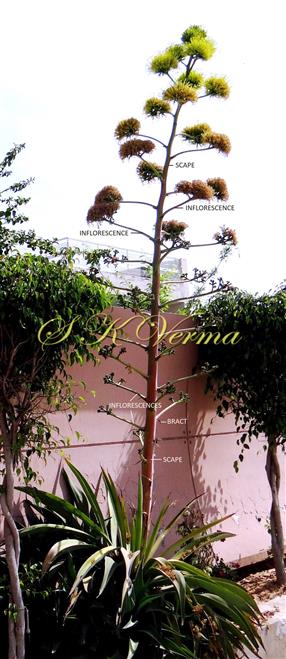
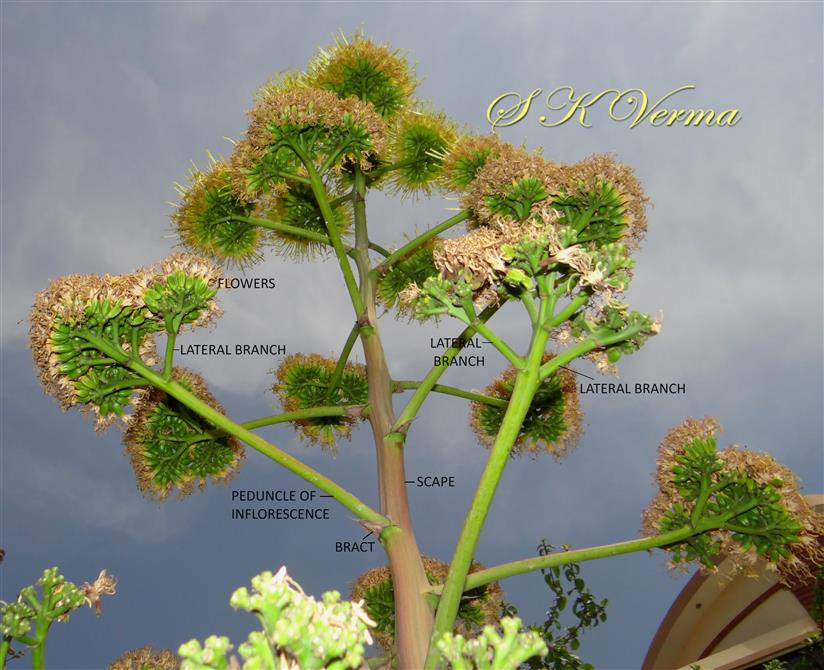
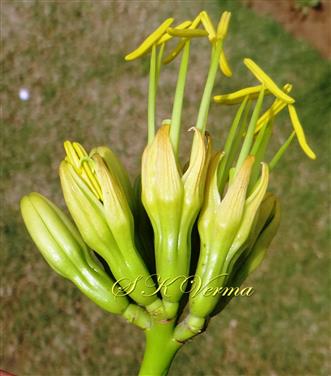
-DSC00340.jpg)
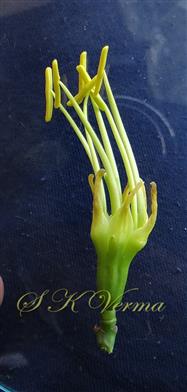
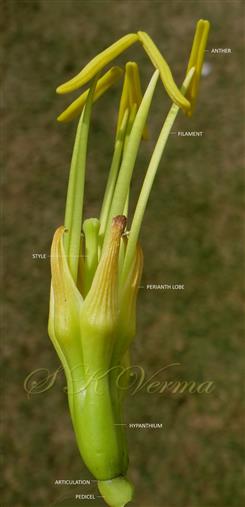

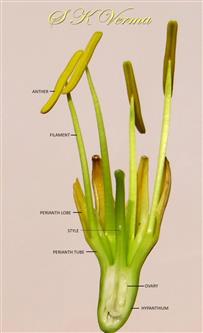
 and Stamens-DSC00328.jpg)
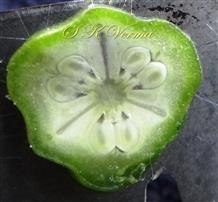
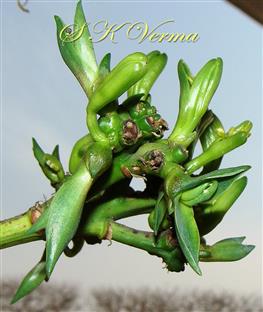
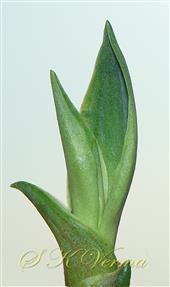







-DSC00340.jpg)




 and Stamens-DSC00328.jpg)


